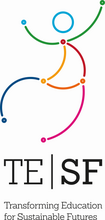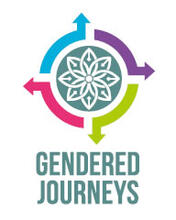Seminar Series:
Presenter(s):

In the twenty-first century non-professional tutors, including teenagers, have an important role to play in the development of contemporary skills among the older population. The aim of the seminar is to describe the instructional design for teenage tutors' instruction in order to prepare them to become a facilitator for older persons’ in e-skill learning.
Two sets of video data analyses based on the micro-genetic approach (Wertsch, 1985) in which moment-to-moment changes in the participants’ behaviour were noted and examined have indicated that although teenagers as naturalistic tutors (Graesser et al., 1995) are able to implement instructional techniques without special tutor training, it is not recommendable to build intergenerational e-skill learning purely on naturalistic tutoring (Tambaum & Normak, 2014; Tambaum, 2016; Tambaum & Normak, 2018).
Intergenerational e-skill learning is a relatively widespread practice. At the same time in the guidelines drawn up for teenage tutors (e.g. Grandparents & Grandchildren, Cyber-Seniors) most of their suggestions are related to principles of communication, with no strategic recommendation nor presentation of instructional design.
As a result of the research series described above, the instructional design of teenage tutors’ preparation for the facilitation of the acquisition of e-skills by older learners, in other words, teenage tutor’s training (TTT) will be introduced. The proposed design is based on some empirical tests and Merrill’s task-centered instructional strategy (Merill, 2007) with several reductions derived from the peculiarities of the task and learning environment the teenage tutor will be prepared for. Critics have pointed out that IGL theory lacks an appropriate conceptual framework (Springate et al., 2008, Vieira & Sousa, 2016) and the current research can be one possible contribution to fulfill this gap.
CR&DALL Seminar Series 2019-20
"Everybody should become a tutor in the community. Teenage tutors facilitating the acquisition of e-skills by older learners: the problem of tutor’s preparation"
Presenter: Tiina Tambaum, Research Fellow, Estonian Institute for Population Studies, Tallinn University
Wednesday, 29th January 2020 12:00-13:30,
St. Andrews Building, Room 517a.
All are welcome. Tea and Coffee will be available
To Register: email [email protected]
Tiina Tambaum is a Research Fellow at the Estonian Institute for Population Studies, Tallinn University and she teaches Educational Gerontology classes at the Institute of Educational Sciences. She has published papers in topics related to older people learning, older learners in mixed-age learning groups, older men’s social inclusion, ageism, and intergenerational learning. Face-to-face instruction methodology for intergenerational learning practices is the field of research she has explored and developed during the last five years using video data (see the list of four references below).
Tiina is a well-published spokesperson in Estonia on the topics of active ageing and educational gerontology. She is a co-founder of the Estonian NGO 65B which aim is professional knowledge share for people who are facilitating older people's development and activity. Recently Tiina started with the YouTube channel “Ageing for Beginners” which aims to challenge age-specific stereotypes and share research-based knowledge about conscious ageing.
References
Goldman, S. R. (2009). Explorations of relationships among learners, tasks, and learning. Learning and Instruction, 19(5), 451–454.
Graesser, A. C., Person, N. K., & Magliano, J. P. (1995). Collaborative dialogue patterns in naturalistic one-to-one tutoring. Applied Cognitive Psychology, 9, 495–522.
Merill, M. D. (2007). A Task-Centered Instructional Strategy. Journal of Research on Technology in Education, 40(1), 33–50.
Polanyi, M. (1967). The Tacit Dimension. London: Routledge.
Springate, I., Atkinson, M., & Martin, K. (2008). Intergenerational practice: a review of the literature. LGA Research Report F/SR262. Slough: NFER.
Tambaum, T. (2019) Focussing on tutoring skills instead of learners’ disadvantages in teenaged tutors’ training for intergenerational learning programmes. European Journal for Research on the Education and Learning of Adults, 10(3), 261-274.. www.rela.ep.liu.se/contents.asp?doi=10.3384/rela.2000-7426.2019103
Tambaum, T. & Normak, P. (2018). Teenaged Internet tutors’ level of interactivity - by sharing tacit and explicit knowledge with older learners. European Journal for Research on the Education and Learning of Adults, 9(2): 229-248. http://www.rela.ep.liu.se/issues/10.3384_rela.2000-7426.201892/ojs161/rela_ojs161.pdf
Tambaum, T. (2016). Teenaged Internet tutors’ use of scaffolding with older learners. Journal of Adult and Continuing Education, 97–118.
Tambaum, T. & Normak, P. (2014). Young Tutors Facilitating the Acquisition of Basic E-skills by Older Learners: The Problem of Selecting the Learning Topics. International Journal of Education and Ageing, 3(3), 191−210.
Wertsch, J. V. (1985). Vygotsky and the social formation of mind. Cambridge, MA: Harvard University Press.
Vieira, S. & Sousa, L. (2016). Intergenerational practice: contributing to a conceptual framework. International Journal of Lifelong Education, 35(4), 396–412.
Wood, D., Bruner, J. S., & Ross, G. (1976). The role of tutoring in problem solving. Journal of Child Psychology and Psychiatry, 17, 89–100.
Nike Sneakers | Women's Sneakers
Discussion topics:
- Log in to post comments














Latest Comments